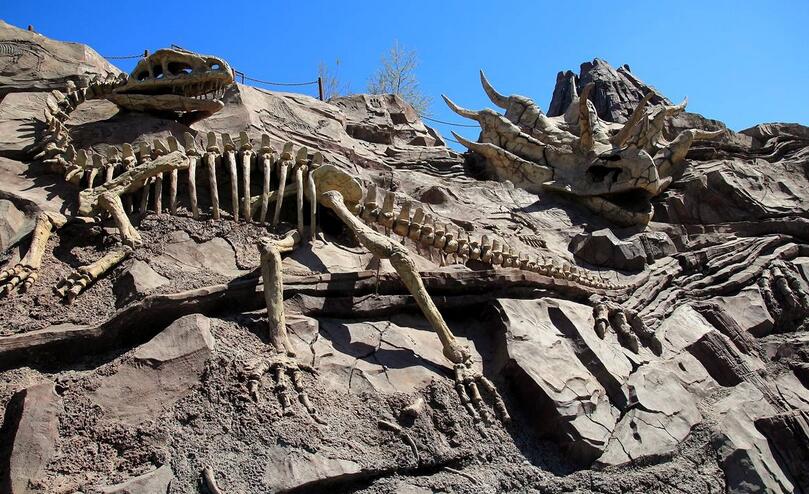(单词翻译:单击)
Lyell, in his Principles, introduced additional units known as epochs or series to cover the period since the age of the dinosaurs, among them Pleistocene ("most recent"), Pliocene ("more recent"), Miocene ("moderately recent"), and the rather endearingly vague Oligocene ("but a little recent").
莱尔在《原理》中使用了新的单位,叫做"世"或"段"来涵盖恐龙以后的时代,其中有更新世("最近")、上新世("较近")、中新世("颇近")和意思很含糊的渐新世("有点儿近")。

Nowadays, and speaking very generally, geological time is divided first into four great chunks known as eras: Precambrian, Paleozoic (from the Greek meaning "old life"), Mesozoic ("middle life"), and Cenozoic ("recent life"). These four eras are further divided into anywhere from a dozen to twenty subgroups, usually called periods though sometimes known as systems. Most of these are also reasonably well known: Cretaceous, Jurassic, Triassic, Silurian, and so on.
如今,一般来说,地质时代划分为四大块,叫做"代":前寒武纪、古生代(源自希腊文,意为"古代生命")、中生代("中期生命")和新生代("新的生命")。这4个代又分为12-20个部分,通常叫做"纪",有时候也称"系"。其中大多数是大家比较熟悉的:白垩纪、侏罗纪、三叠纪、志留纪等等。


